You can revive historical jewelry craftsmanship by mastering traditional metalworking techniques like filigree and granulation, learning ancient stone setting methods such as bezel and prong settings, and practicing hand engraving with specialized tools. Incorporate traditional equipment like hand-powered rolling mills and drawplates into your modern workshop, document cultural techniques through photography and written records, build communities of practice for knowledge sharing, and study historical guild apprenticeship models for structured learning paths that’ll reveal deeper mastery.
Understanding Traditional Metalworking Techniques and Their Modern Applications
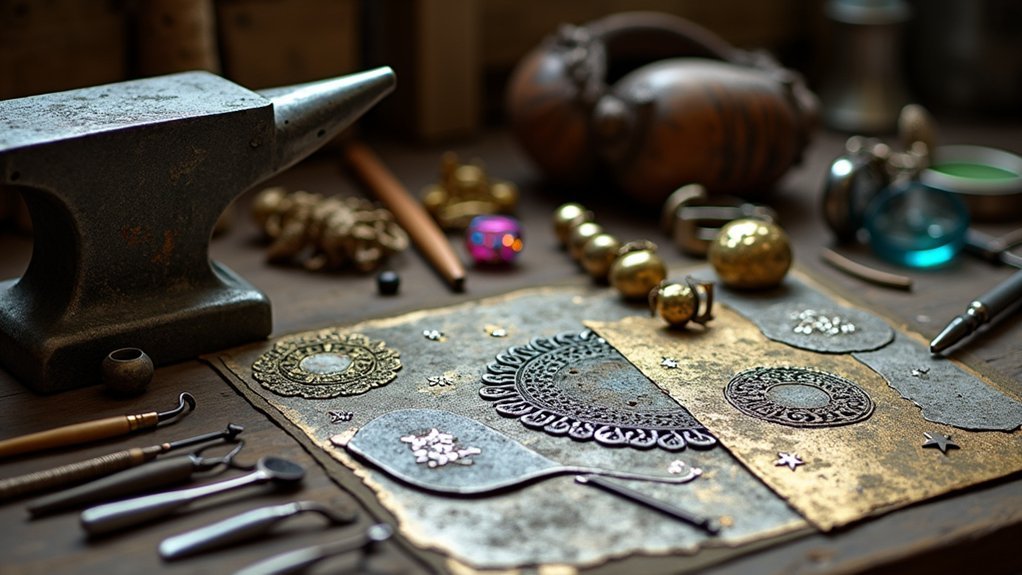
For thousands of years, metalworking techniques like forging, casting, and soldering have formed the backbone of jewelry creation, and today’s artisans are rediscovering how these time-tested methods can enhance contemporary designs.
You’ll find that traditional metalworking techniques remain essential for creating both antique pieces and modern jewelry.
When you explore filigree work, you’re mastering an ancient art of twisting fine wires into intricate designs that showcase timeless beauty.
Granulation offers another historical method where you’ll fuse tiny metal balls onto surfaces for stunning texture.
Today’s artisans blend preserving craftsmanship with modern technology, using laser welding and CAD software for jewelry restoration and new creations.
Modern artisans seamlessly merge ancient metalworking traditions with cutting-edge technology, creating innovative jewelry that honors both heritage and contemporary design.
You’re not just learning techniques—you’re connecting with centuries of artistic heritage while innovating for contemporary markets.
Mastering Ancient Stone Setting Methods for Contemporary Jewelry
You’ll find that traditional prong setting revival brings the late 19th century’s light-maximizing brilliance into modern designs, allowing your gemstones to capture and reflect light with unmatched intensity.
Ancient bezel techniques from Egypt offer you superior protection for precious stones while creating that distinctive rim-encased aesthetic that’s perfect for contemporary minimalist jewelry.
These time-tested methods require you to understand each gemstone’s unique properties, as softer stones like opals need gentler handling than diamonds or sapphires.
Traditional Prong Setting Revival
When you examine antique jewelry pieces, you’ll notice the delicate metal claws that cradle precious stones with remarkable precision—these are traditional prong setting techniques, a cornerstone technique that’s experiencing a renaissance among contemporary artisans.
You’ll find that mastering this craftsmanship requires balancing strength with aesthetic appeal, ensuring each prong holds stones securely while preserving its original elegance.
You can revive hand-forged methods using similar tools that historical jewelers employed. Whether you choose 4, 6, or 8 prongs, each configuration offers different security levels and visual impact for personalized design choices.
Ancient Bezel Techniques
Ancient bezel setting methods offer a compelling alternative to prong techniques, wrapping precious stones in protective metal frameworks that have secured gemstones for millennia.
You’ll discover that these ancient bezel techniques originated with Egyptian and Roman civilizations, who mastered encasing stones within metal borders for both durability and visual enhancement.
When you practice historical craftsmanship, you can choose between full bezels that completely encircle gemstones or partial versions that create innovative design possibilities.
You’ll need precision when measuring and shaping metal using traditional tools like gravers and files.
Today’s contemporary artisans are brilliantly combining these time-tested methods with modern materials, creating unique jewelry pieces that transform ancient wisdom into stunning wearable art pieces featuring intricate designs that honor cultural aesthetics.
Reviving Hand Engraving and Filigree Artistry
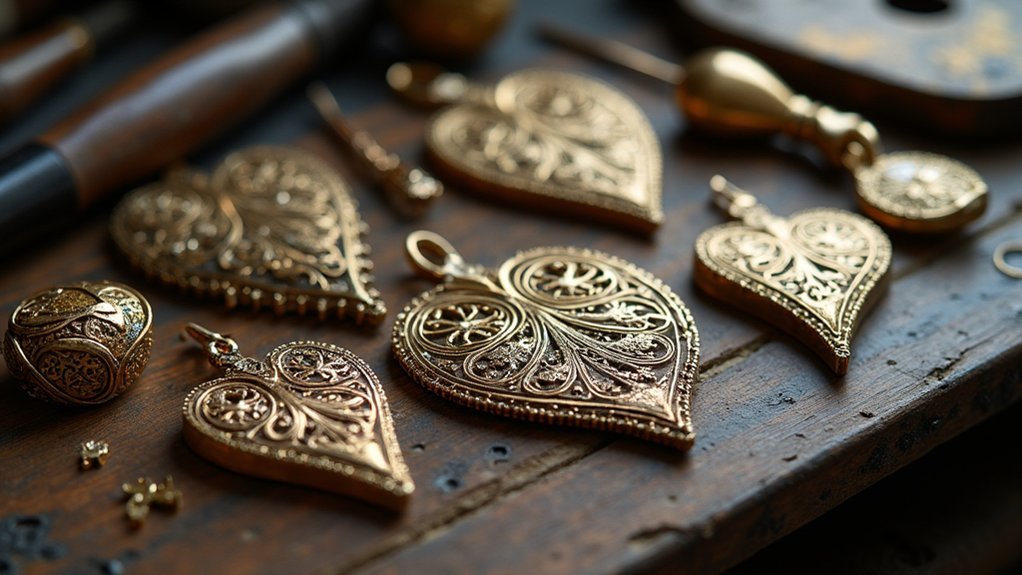
While machine-made jewelry dominates today’s market, a growing number of artisans are rediscovering the lost arts of hand engraving and filigree work.
You’ll find that hand engraving requires specialized tools and years of practice to master intricate metal carving techniques.
Filigree artistry involves creating delicate lace-like patterns using fine metal threads that date back to ancient civilizations.
Ancient filigree techniques transform precious metal threads into intricate lace-like patterns that showcase centuries-old craftsmanship mastery.
If you’re interested in preserving traditional skills, you can join workshops and apprenticeships that teach these time-honored techniques.
Contemporary jewelers are successfully combining historical craftsmanship with modern materials to create innovative pieces.
You’ll discover that learning these methods allows you to offer unique handcrafted pieces that stand apart from mass-produced jewelry in today’s competitive market.
Learning From Historical Guild Systems and Apprenticeship Models
You can learn valuable lessons from medieval guild structures that created systematic pathways for preserving jewelry craftsmanship across generations.
These organizations established rigorous master-apprentice relationships where knowledge transferred through seven-year commitments, ensuring artisans mastered every aspect of their trade before earning recognition.
Medieval Guild Structures
Seven centuries ago, medieval guilds established the gold standard for jewelry craftsmanship training that modern artisans can still learn from today.
These organized associations created rigorous quality standards through structured apprenticeship systems that preserved traditional techniques across generations. You’ll find their approach particularly valuable for understanding how the jewelry industry can maintain excellence while fostering community among craftspeople.
Medieval guilds offered extensive support systems that extended beyond technical training:
- Mutual aid networks that provided financial security and professional guidance during challenging periods
- Strict production regulations ensuring only high-quality jewelry reached the market
- Dispute resolution frameworks that maintained professional relationships and community harmony
Though guilds declined in the late medieval period, their structured methodology remains relevant for modern artisans seeking to revive historical craftsmanship methods and build sustainable creative communities.
Master-Apprentice Knowledge Transfer
Though modern education often emphasizes speed and efficiency, the master-apprentice relationship that defined medieval guilds prioritized depth and mastery over quick results.
You’ll find that this apprenticeship model created thorough understanding through years of dedicated study under master craftsmen. The system guaranteed skill transfer wasn’t rushed—apprentices spent 5-7 years learning jewelry-making techniques, design principles, and historical context.
You can apply these principles today by seeking mentor programs that emphasize traditional craftsmanship methods. Look for opportunities where experienced artisans share both technical skills and theoretical knowledge.
The guild approach required creating a “masterpiece” to demonstrate competency—you should establish similar milestones in your own learning journey to guarantee you’re truly mastering each aspect of the craft.
Incorporating Traditional Tools and Equipment Into Modern Workshops
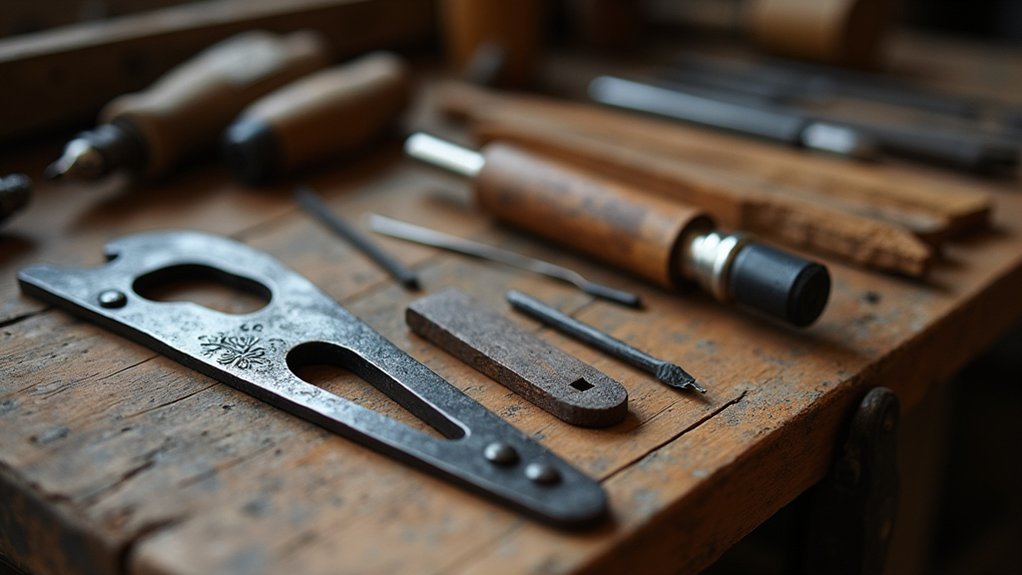
While modern technology has revolutionized jewelry making, integrating traditional tools into your contemporary workshop creates an authentic bridge between past and present craftsmanship.
Blending time-honored techniques with modern methods creates jewelry that honors both heritage craftsmanship and contemporary innovation.
You’ll discover that hand-powered rolling mills enable intricate metal designs with an artisanal feel that preserves historical craftsmanship techniques. Modern jewelers can utilize drawplates to create precisely calibrated wire, maintaining the integrity found in ancient pieces.
- Lost-wax casting connects you directly to Bronze Age methods while adding contemporary elements to your designs.
- Bezel pushers and burnishers enhance stone-setting quality, preserving the piece’s integrity through time-tested practices.
- Chasing hammers with pitch bowls help achieve detailed texture and relief work reminiscent of vintage jewelry.
These traditional tools guarantee your modern workshop maintains authentic craftsmanship standards.
Preserving Cultural Jewelry Making Heritage Through Documentation
Because traditional jewelry-making knowledge risks disappearing with each passing generation, you must actively document these invaluable cultural practices to guarantee their survival.
Start by recording detailed processes, materials, and tools that artisans use in their craftsmanship. Photography and videography capture intricate steps that written descriptions can’t fully convey.
You’ll need to research the historical context surrounding specific jewelry styles, documenting their cultural heritage significance. Create extensive written records that explain techniques alongside their social and ceremonial meanings.
Collaborative projects between craftspeople, historians, and educators produce the most thorough documentation.
Engage your local community in preserving traditional techniques. When you involve younger generations in documentation efforts, you’re fostering cultural pride while encouraging them to continue these time-honored practices for future artisans.
Building Communities of Practice for Historical Technique Exchange
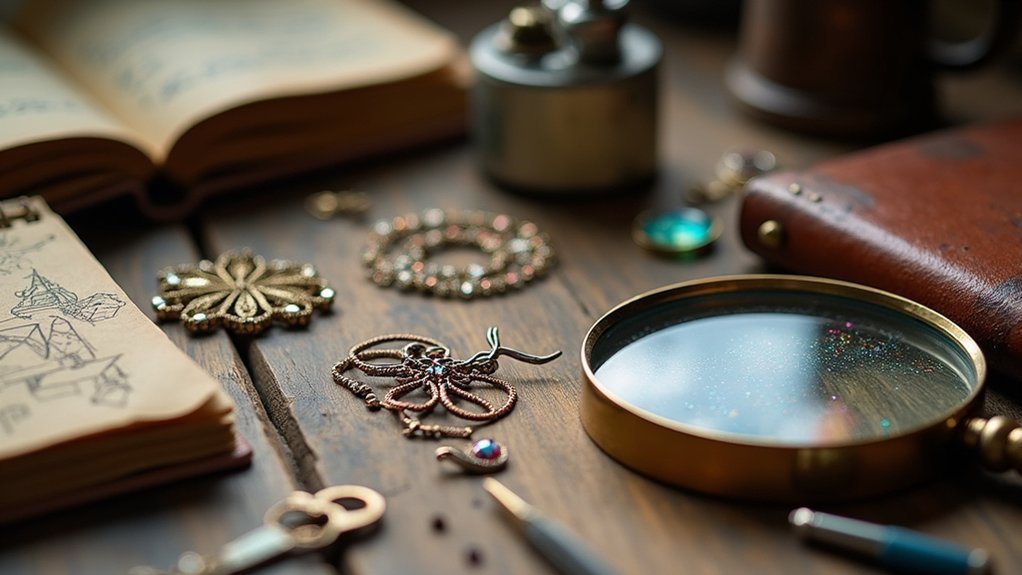
Documentation efforts reach their full potential when you create vibrant communities where artisans actively exchange historical techniques.
You’ll find that establishing local workshops creates collaborative environments where craftspeople share knowledge and foster skill exchange essential for preserving craftsmanship.
Building these communities requires multiple approaches:
- Connect digitally: Create online platforms where artisans from diverse backgrounds share experiences and document traditional jewelry-making techniques.
- Organize community events: Host jewelry-making fairs and exhibitions that boost public engagement and awareness about historical techniques.
- Establish mentorship programs: Link experienced craftspeople with novices to guarantee specialized knowledge transmission.
You can also collaborate with educational institutions to incorporate historical techniques into curricula, cultivating appreciation and expertise among future jewelers.
These communities become living repositories where ancient methods thrive.
Frequently Asked Questions
How Do I Find Authentic Historical Jewelry Pieces to Study and Replicate?
You’ll discover authentic pieces at estate sales, antique shops, and museum collections. Contact local historical societies and jewelry dealers. Search online auction sites and specialized antique jewelry websites for verified authentic examples to examine closely.
What Are the Typical Costs for Setting up a Traditional Jewelry Workshop?
You’ll need $3,000-15,000 for basic hand tools, anvils, torches, and workbenches. Add $2,000-5,000 for precious metals inventory. Rent varies widely by location, but expect $500-2,000 monthly for adequate workshop space.
Which Historical Periods Offer the Best Techniques for Beginner Craftsmen?
You’ll find Renaissance and Victorian periods most beginner-friendly. Renaissance techniques emphasize basic metalwork and stone setting, while Victorian methods focus on accessible wirework and simple chain-making that don’t require expensive specialized tools.
How Long Does It Take to Master Basic Traditional Jewelry Making Skills?
You’ll need six months to learn basic wire wrapping and simple soldering. Mastering fundamental techniques like filing, texturing, and stone setting typically takes one to two years with consistent daily practice and dedication.
Where Can I Source Authentic Traditional Materials and Gemstones Today?
You’ll find authentic materials through specialized gem dealers, estate jewelry auctions, and traditional mining regions. Seek certified gemological suppliers, antique bead merchants, and artisan communities who’ve preserved original sourcing methods for genuine historical materials.
In Summary
You’ll discover that reviving historical jewelry craftsmanship isn’t just about preserving the past—it’s about enriching your future creations. By mastering these traditional techniques, you’re connecting with generations of skilled artisans while developing your unique artistic voice. Don’t let these invaluable methods fade away. Start incorporating ancient wisdom into your modern practice today. Your jewelry will gain depth, character, and timeless appeal that mass-produced pieces simply can’t match.

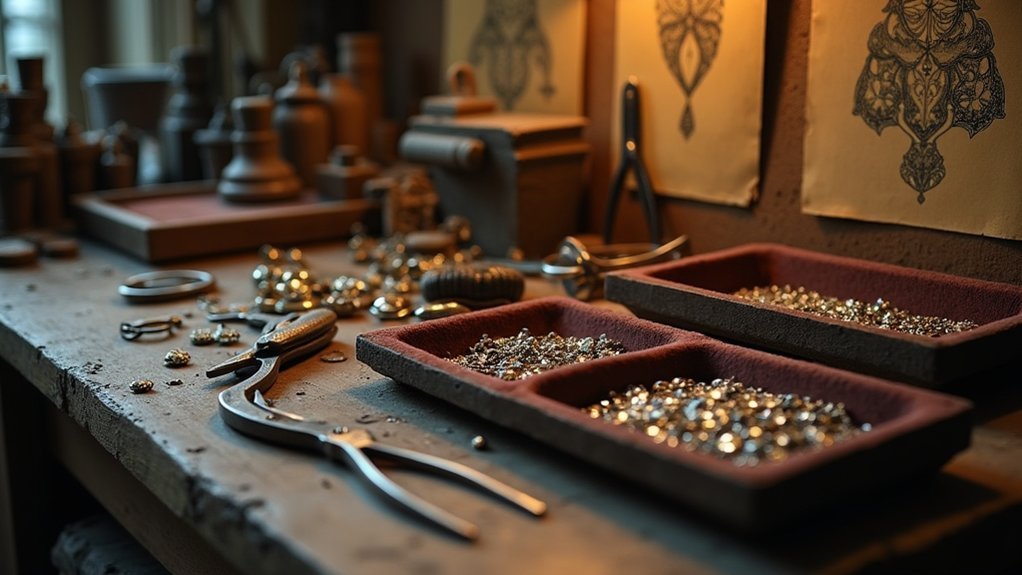
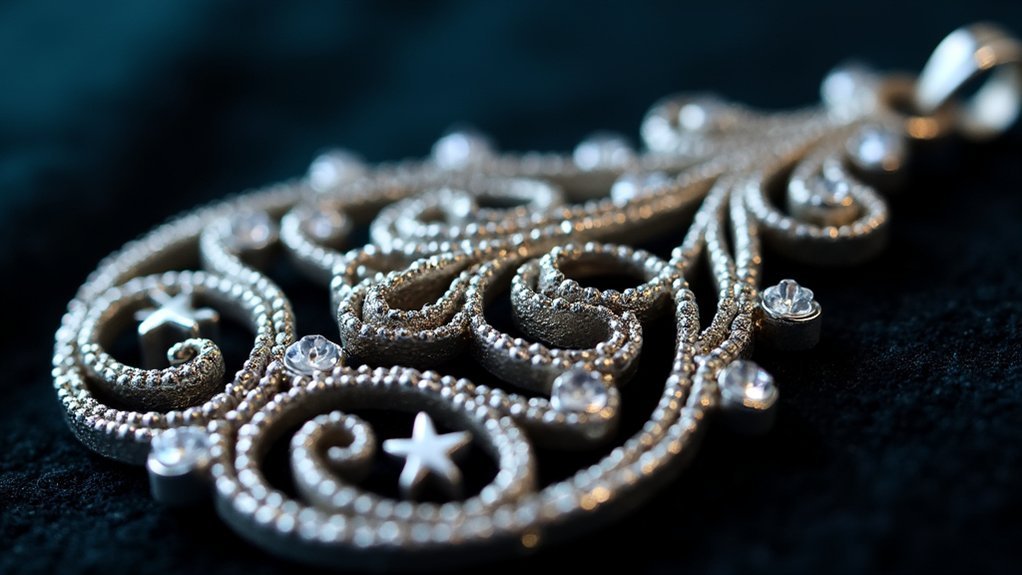
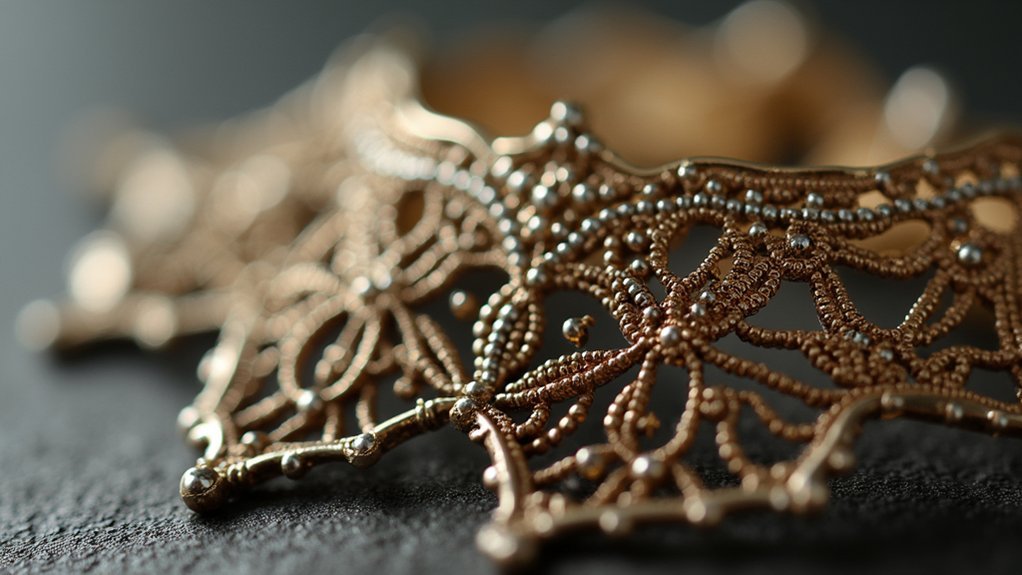
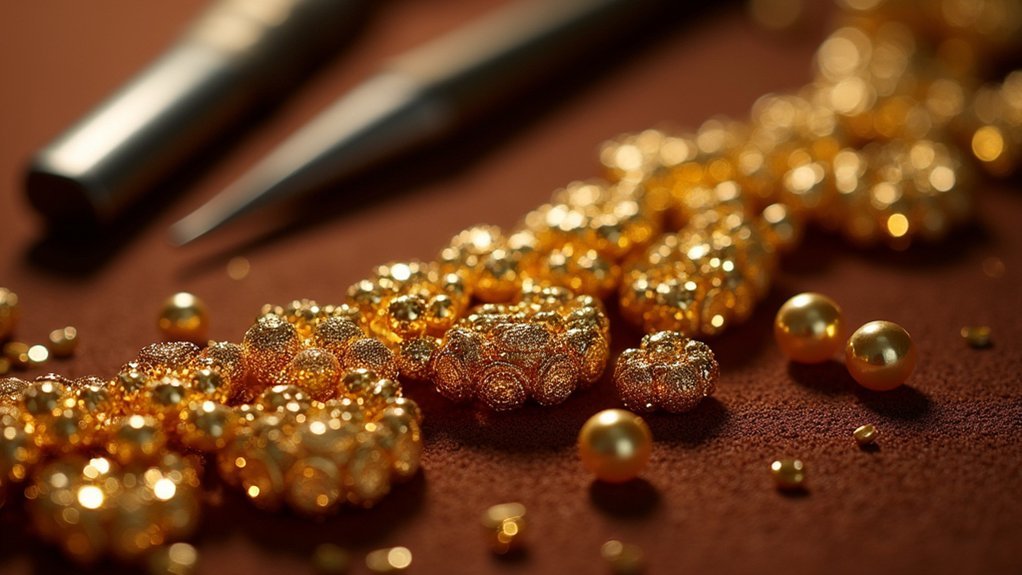
Leave a Reply